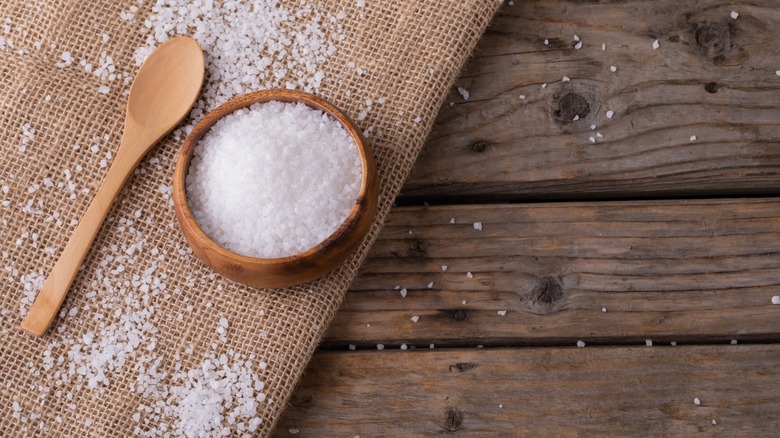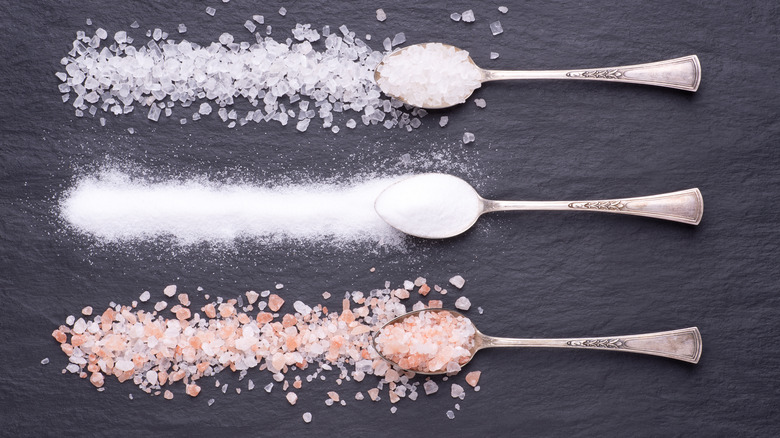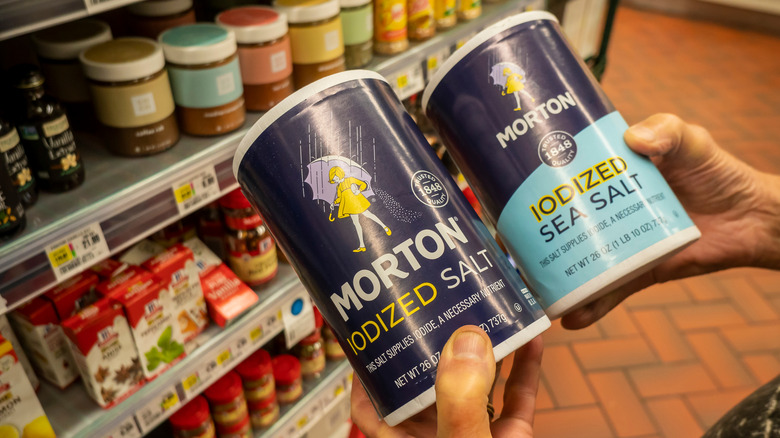Does Anything Actually Happen When Salt Passes Its Best-By Date?
Those little grains of salt casually sprinkled on our food have far more significance than many imagine, especially in their glorious historic journeys from sea to shaker. In addition to taste and health implications, salt has trod a sacred path on its way to supermarket aisles. Thousands of years ago, it held sacred spots in religion, culture, finances, social circles, and food preservation — with the prosperity of entire empires relying on salt, notes Baylor University Medical Center.
Fortunately, even in the modern world of refrigeration and enhanced food preservation, salt is one of the few ingestible items that need little help in that regard. It can last indefinitely, depending on the type of salt, how its processed, and, in some cases, whether it's stored correctly.
As for those best-by dates that today's consumers rely on, they may or may not have salty implications. Here's a look at what really happens when salt soars past its expiration date, even by multiple years.
Pure salt does not spoil
Many considerations go into that shaker, wooden salt cellar, or ceramic "salt pig" adorning your kitchen or dining table. The parade of salts ranges from standard table salt to kosher, slab, rock, flaked Maldon, sea salt, and specific regionals such as red or black Hawaiian sea salts and Himalayan pink salt mined in Pakistan. They can vary in consistency, and some by taste, leading to different uses. But one thing they all have in common is the inherent natural resistance to spoilage.
Reader's Digest explains how salt preserves food by drying out the water in them, preventing bacteria from growing. Since salt contains no water, it never spoils or expires, meaning it lasts indefinitely if stored in a cool and dry environment. Other caveats arise, ones that can affect the best-by dates. The biggest one is whether the salt contains additives.
Pure salt never expires, but many types of salt contain things that can degrade the quality. For example, sea salt that's unrefined could contain algae, and the aesthetically pleasing pink hue of Himalayan salt comes from mineral-based impurities. Table salt, which we've recognized by the traditional round cans, is uniform in size and easy to pour or sprinkle, but it often comes with two additives: an anti-caking agent and iodine. All these things can affect the salt's taste and texture. But does that mean it's inedible?
Additives may degrade the quality of salt over time
It's important to know that, even with additives, the best-by dates on a salt container rarely mean that it will "spoil" and cause harm if eaten past the posted date. That's because the microbes typically causing food poisoning or "foodborne illnesses" cannot survive in salt. However, deterioration of quality can come from multiple sources.
Apart from impure natural elements, Morton Salt notes that commercially added seasonings, colorings, spices, iodine, and added flavorings can all lead to recommended best-by dates from manufacturers. Morton, which operates at least 20 salt production facilities primarily in the United States, offers recommended use-by guidelines specific to the types of salt products. It also explains why those recommendations exist.
Among the suggestions are five years for plain table salt, kosher salt, and sea salt due to clumping that can occur when anti-caking additives lose efficacy over time. Salts without those anti-caking agents, including Himalayan Pink salt, get only three years. Iodized salts get the five-year advice because iodine, an essential mineral the human body doesn't produce on its own, gradually dissipates in salt. Seasoned salt products receive two or three best-by years.
So, when salt passes the posted dates, is it safe to eat? Most likely. Will it taste as good or have the consistency and value you paid for? Probably not.


